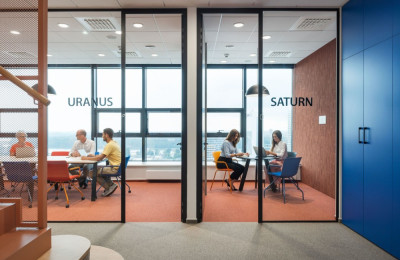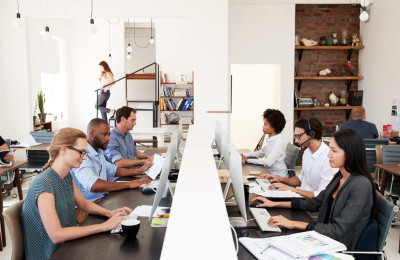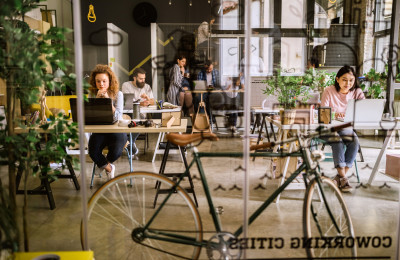Exploring the great indoors
We visited the Well Living Lab, a state-of-the-art laboratory studying connections between health and indoor environments.
In late September, some key members of our research team visited the Well Living Lab in Rochester, Minnesota. It was time very well spent, because the lab researches how our homes, offices and other indoor environments influence our health and well-being.
The indoor effect
On average, we spend around 90% of our day indoors. What kind of impact does that have our physical and mental health?
Experts from Delos, a wellness real estate and technology company based in New York City, and Mayo Clinic in Rochester, Minnesota, ranked America’s number one hospital by U.S. News, wanted to explore the effects of the indoors. And with little evidence-based research from real-world settings available to draw from, they decided to build an adaptable laboratory: the Well Living Lab.
A living lab simulates real life conditions for study participants. They come in, go about their normal daily lives, and give researchers an extended, in-depth look at how they complete certain tasks and react to their surroundings.
Located in Rochester, Minnesota, the Lab stretches across the third floor of an office building. It’s tailored for studies on the indoor environment’s effects on health, well-being and performance – from stress to sleep quality and productivity.
Behind the walls and floor, it’s packed with state-of-the-art technology, environmental sensors and other advanced solutions that collect masses of data. Furthermore, the Lab is supremely flexible: able to be transformed from an open-plan office into a hotel room or even an apartment. Check out this film to learn more.
An innovative beginning
The Well Living Lab opened in 2016 and its first study was a practical one – checking to see if all the technology there would work over a sustained period.
The Mayo Clinic’s Medical Records department was its first cohort. Its employees worked in the space for 18 weeks and, as well as proving everything worked, they provided real insight into the influence of light, sound and thermal conditions on knowledge work.
When they first arrived, employees worked in conditions that mimicked their normal offices. Then, over time, the Lab’s scientists started altering the environment, changing its brightness and temperature, and piping irritating sounds into the space, like phones ringing, background conversations and mouse clicks. The researchers went on to publish their observations in Building and Environment, a peer reviewed academic journal .
Building a wealth of vital research
The Lab went on to complete a myriad of studies, and most recently one focusing on sleep quality. Women were invited to use it as their home during work days four times a week – with the space configured as typical apartments.
Naturally, the team needed a benchmark – so participants wore biometric wristbands before coming to the lab. Once they arrived though, their sleep quality was measured by virtually invisible sensors. In fact, data on their core temperature was measured by a pill swallowed before they went to bed.
The results haven’t been published yet. But what we can say is that temperature regulation is vital to improving sleep quality. A follow-up study will look at how aspects of the environment can be leveraged to help people wake up more refreshed.
What’s happening there now? One of the lab’s spaces is set up as an office, this time looking at novel ways of introducing biophilia into office design and measuring the impact on employees.
The art of living well
There’s no denying the lab is a hugely impressive space. The technology is cutting-edge, and the data it delivers are driving some hugely influential research.
But it’s not the only intriguing tool on show. The immersive art installation in their lobby kept us coming back for more every day we were on site. Obviously, it was all part of our work: looking at a piece of art helps stimulate your brain 🙂




